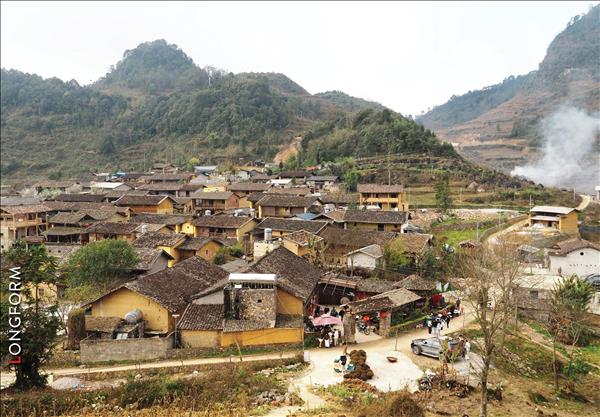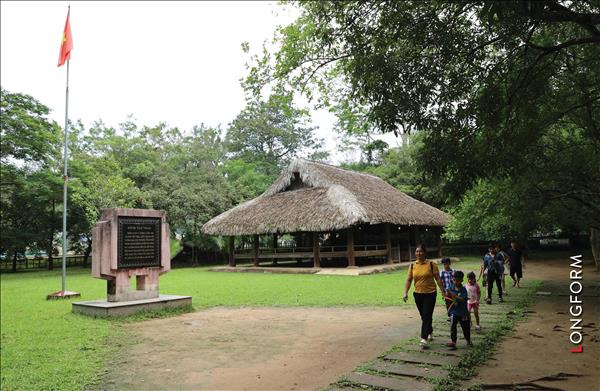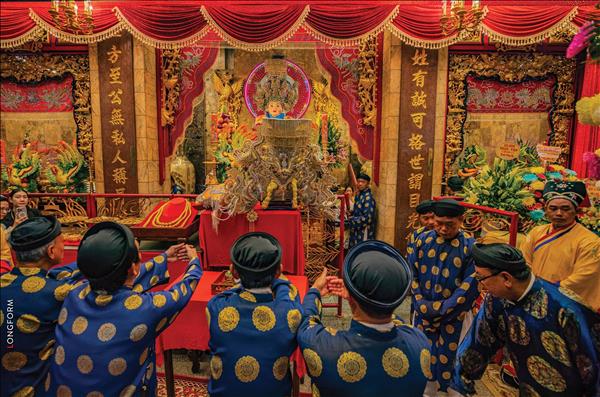A longstanding history
Although the origin of ao dai has not been clearly known, historians agreed that ao dai appeared in Vietnam in the early common era. The first Vietnamese women wearing ao dai were believed to be the Trung sisters (Hai Ba Trung) (AD 40-43), the first two female generals of Vietnam. Legend has it that when riding the elephants to fight the Han, the two ladies wore cuirass ao dai with two gold panels. To show respect for the two national heroines, Vietnamese women at that time avoided wearing two-panel dresses, using four-panel long dresses instead. The four panels of the long dress symbolized the four parents of a woman and her husband, which implied the gratitude of children towards their parents. The dress also had five buttons tightened on the left chest which represented Confucianism’s five constant virtues of benevolence, righteousness, propriety, wisdom and trustworthiness.
The four-panel dress of Vietnamese women changed through history, particularly from the 17th to 19th centuries when it was modified into a five-panel dress to show the wealth and social position of a woman.
In the early 1930s, the western culture penetrating into Vietnam resulted in a change in the aesthetic taste for ao dai. During this time, an artist named Cat Tuong launched a new-style of ao dai called Lemur which was her name in French. Lemur had a western style with puffy sleeves or a puffy collar or a round collar. Lemur was later modified by artist Le Pho into a closed collar long dress with two panels, which had a well-fitted bodice and was split on the sides from the waist down, leaving the two panels falling freely. In the early 1960s, the ao dai with Raglan sleeves and white leg trousers became popular.
Place of origin
Trach Xa village in Ung Hoa district, Hanoi, is known as the place where the ao dai tailoring craft came from. The village, about 60 km from central Hanoi, has been making ao dai for more than one thousand years.
Trach Xa village has a bustling atmosphere these days as the lunar new year festival is drawing near, which means a rising demand for ao dai from across the country. most Vietnamese women will wear this traditional dress on the occasion. Some 70% of families in Trach Xa keep their thousand-year-old craft alive. Trach Xa villagers strictly observe the village’s rule that any children from an ao dai tailoring family must master the skills of the craft before leaving the village to settle in other places, no matter what job they are doing.
We met 86-year-old Nguyen Van Nhien in his old northern architecture-style house. Nhien has been making ao dai his whole life, learning the craft at the age of 16. According to Nhien, villagers passed on from one generation to another a legend of Trach Xa’s ao dai tailors to tribute the founder of the craft. The legend has it that in 968, after defeating 12 warlords and unifying the country, Dinh Tien Hoang came to the throne and went to Son Tay to recruit talent for his troops. There Dinh Tien Hoang met Nguyen Thi Sen, a beautiful young girl from Trach Xa village, who was an excellent seamstress and embroiderer. Nguyen Thi Sen became the fourth queen of Dinh Tien Hoang and introduced the craft of tailoring ao dai to the royal court. After the tragic death of Dinh Tien Hoang in 979, Nguyen Thi Sen took her children back to her home village and taught the craft to Trach Xa villagers.
Every year, during the anniversary of the founding of the ao dai tailoring craft, Trach Xa native villagers from across the country return to their village to pay tribute to the foremother of their craft. These villagers, though living in different parts of the country, have kept alive their ancestral trade and made Trach Xa ao dai popular nationwide. Trach Xa ao dai are now not only favored at home, but also exported to Australia, the US, Thailand and Sweden.
Although the origin of ao dai has not been clearly known, historians agreed that ao dai appeared in Vietnam in the early common era. The first Vietnamese women wearing ao dai were believed to be the Trung sisters (Hai Ba Trung) (AD 40-43), the first two female generals of Vietnam. Legend has it that when riding the elephants to fight the Han, the two ladies wore cuirass ao dai with two gold panels. To show respect for the two national heroines, Vietnamese women at that time avoided wearing two-panel dresses, using four-panel long dresses instead. The four panels of the long dress symbolized the four parents of a woman and her husband, which implied the gratitude of children towards their parents. The dress also had five buttons tightened on the left chest which represented Confucianism’s five constant virtues of benevolence, righteousness, propriety, wisdom and trustworthiness.
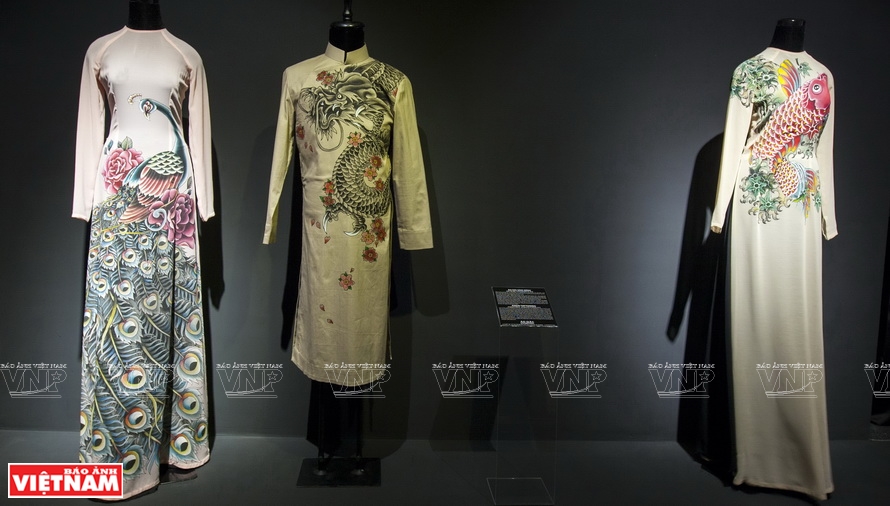 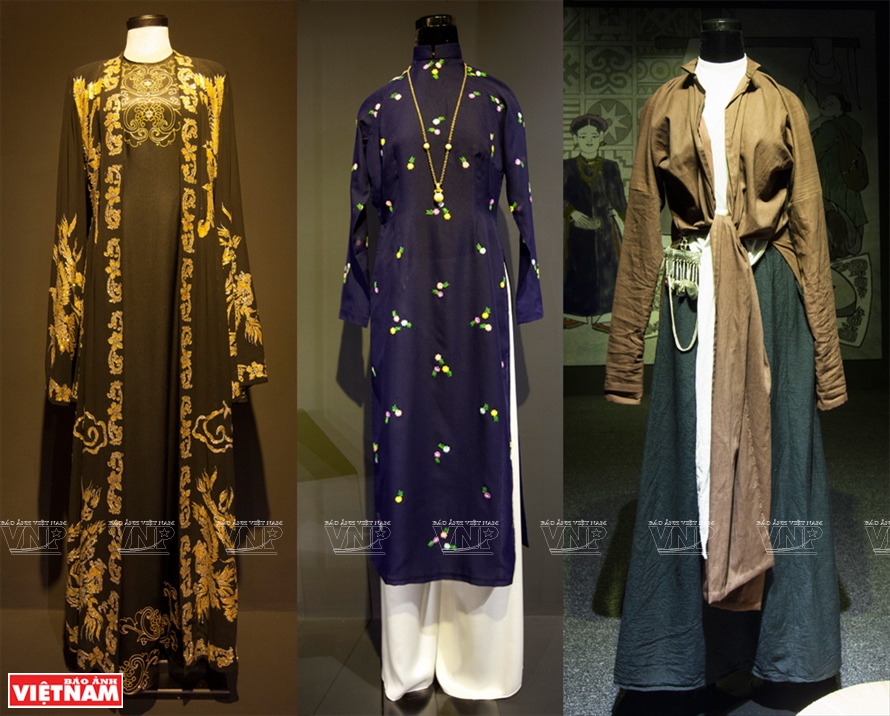 Ao dai through history displayed at the ao dai museum on Long Thuan street, district 9, Ho Chi Minh City. Photo: Thong Hai Ao dai is the main costume of the performers in ca tru singing. Photo: Tat Son
Xoan singers of Phu Tho province wear ao dai. Photo: Tat Son
|
The four-panel dress of Vietnamese women changed through history, particularly from the 17th to 19th centuries when it was modified into a five-panel dress to show the wealth and social position of a woman.
| In Hue, regarded as the capital of the ao dai, the traditional long dress has become a uniform of schoolgirls, and many state employees, which is worn every Monday. |
Place of origin
Trach Xa village in Ung Hoa district, Hanoi, is known as the place where the ao dai tailoring craft came from. The village, about 60 km from central Hanoi, has been making ao dai for more than one thousand years.
Trach Xa village has a bustling atmosphere these days as the lunar new year festival is drawing near, which means a rising demand for ao dai from across the country. most Vietnamese women will wear this traditional dress on the occasion. Some 70% of families in Trach Xa keep their thousand-year-old craft alive. Trach Xa villagers strictly observe the village’s rule that any children from an ao dai tailoring family must master the skills of the craft before leaving the village to settle in other places, no matter what job they are doing.
|
Ao dai tailoring in Trach Xa village in Ung Hoa district, Hanoi. Photo: Cong Dat / VNP Trach Xa villagers usually learn basic hand stitching at the age of six and they are able to make a complete outfit a few years later. Photo: Cong Dat Nguyen Van Nhien has been making ao dai for 70 years in Trach Xa. Photo: Cong Dat |
We met 86-year-old Nguyen Van Nhien in his old northern architecture-style house. Nhien has been making ao dai his whole life, learning the craft at the age of 16. According to Nhien, villagers passed on from one generation to another a legend of Trach Xa’s ao dai tailors to tribute the founder of the craft. The legend has it that in 968, after defeating 12 warlords and unifying the country, Dinh Tien Hoang came to the throne and went to Son Tay to recruit talent for his troops. There Dinh Tien Hoang met Nguyen Thi Sen, a beautiful young girl from Trach Xa village, who was an excellent seamstress and embroiderer. Nguyen Thi Sen became the fourth queen of Dinh Tien Hoang and introduced the craft of tailoring ao dai to the royal court. After the tragic death of Dinh Tien Hoang in 979, Nguyen Thi Sen took her children back to her home village and taught the craft to Trach Xa villagers.
| Ao dai, in its original Vietnamese form, is defined in the Oxford dictionary as a Vietnamese woman’s long-sleeved tunic with ankle-length panels at front and back, worn over trousers. |
|
The ao dai festival in Hanoi. Photo: Thanh Giang
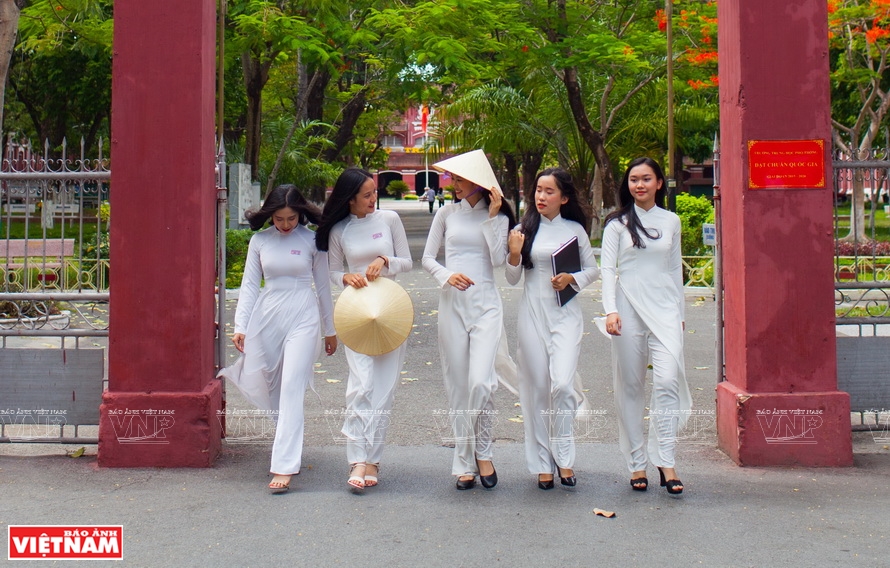 Ao dai has become the daily uniform of female students in Hue. Photo: Nguyen Luan Hue city officials wear ao dai to work. Photo: Files Ao dai is a traditional costume in weddings and engagement ceremonies in Hanoi. Photo: Thanh Giang 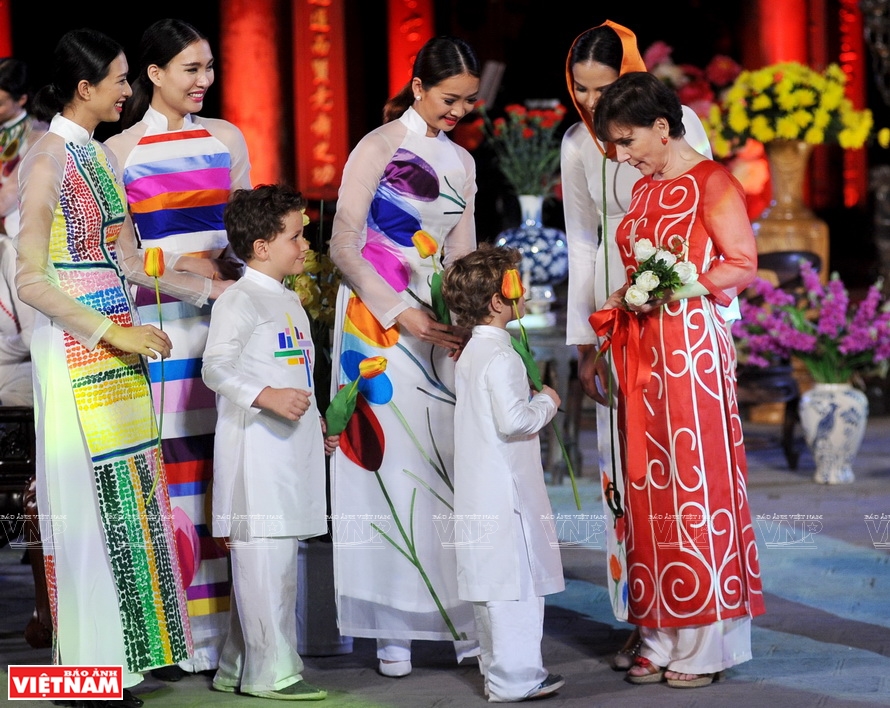 Italian Ambassador to Vietnam, Cecilia Piccioni wears her red ao dai by designer Chula at the festival which took place in Van Mieu - Quoc Tu Giam. Photo: Thanh Giang 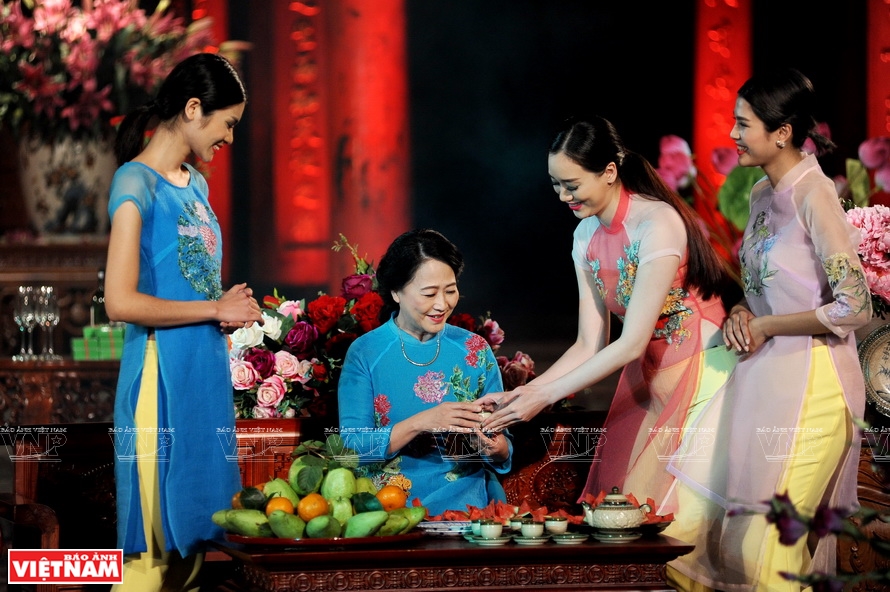
Ao dai collections by well-known designers are shown at the Ao dai Festival at Van Mieu - Quoc Tu Giam, Hanoi. Photo: Thanh Giang
|
| Vietnam has 13 UNESCO-recognized intangible cultural heritages of humanity, seven of which are folk art genres where ao dai or four-panel dress is used by performers. They are quan ho singing, ca tru singing, xoan singing, vi giam singing, Hue royal music, don ca tai tu (songs of amateurs), and worship of mother goddesses. This shows the role of ao dai in promoting Vietnamese intangible cultural heritages. |
Story: Thao Vy - Photos: Tat Son, Cong Dat, Thong Hai,
Nguyen Luan , Thanh Giang & Files

